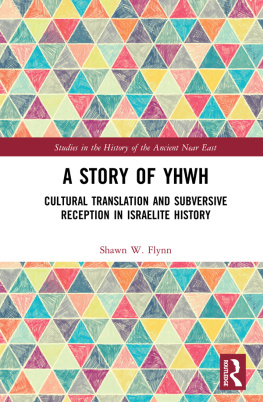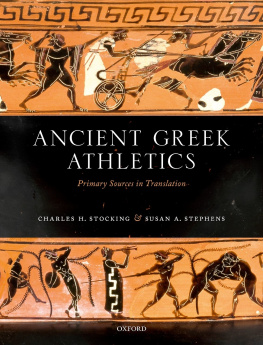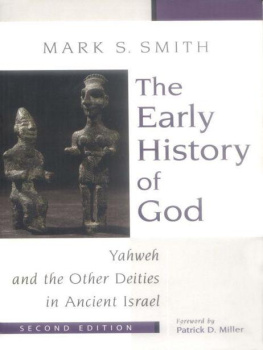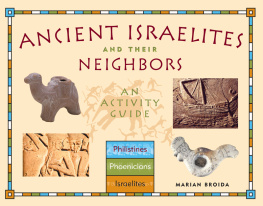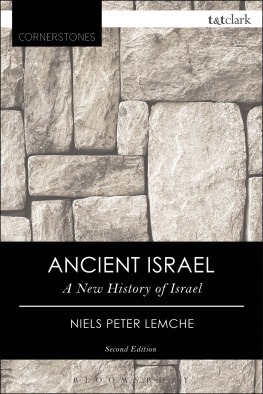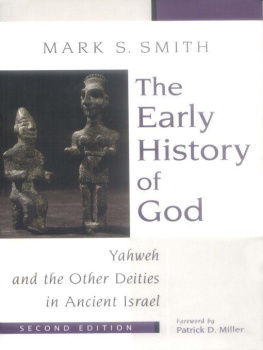A Story of YHWH
A Story of YHWH investigates the ancient Israelite expression of their deity, and tracks why variation occurred in that expression, from the early Iron Age to the Persian period.
Through this text, readers will gain a better appreciation for the complexities and contexts in the development of YHWH, from its earliest origins to the Persian period. Two interpretive frameworkscultural translation and subversive receptionare offered for filtering through the textual data and contexts. Comparative study with ancient Near Eastern deities and select biblical texts lead readers through early YHWHism, YHWHs original outsider status, and the eventual impact of urbanization on the expression. Perceived and real pressures then challenge urbanite YHWHism and invite new directions for forming a unique expression of divinity in the ancient world.
This book is intended for those interested in the study of ancient divinity broadly as well as those who study ancient Israel and the Hebrew Bible. The work provides generalists with a better appreciation for the particular challenges in working in the ancient Near East and with the bible specifically, while it provides specialists with a broad theory that can be continually tested. For both, the study provides two reading lenses to work through similar questions and an accounting of why the many contextually driven and varied constructions of YHWH may have occurred.
Shawn W. Flynn received a PhD in 2012 from the University of Toronto, Canada, in Ancient Near Eastern Studies. His first book was YHWH is King, published in Vetus Testamentum Supplements (2014); he has also authored Children in Ancient Israel: The Hebrew Bible and Mesopotamia in Comparative Perspective (2018). In addition, he has edited Children in the Bible and the Ancient World: Comparative and Historical Methods in Reading Ancient Children (2019). He is currently an Associate Professor of the Hebrew Bible at St Josephs College, University of Alberta, Canada, and Academic Dean of the College.
Studies in the History of the Ancient Near East
Series editor: Greg Fisher, University of California Santa Barbara, USA
Advisory Board of Associate Editors
Raanan Boustan, University of California, Los Angeles, USA; Zeba Crook, Carleton University, Canada; Elizabeth DePalma Digeser, University of California at Santa Barbara, USA; Matthew Gibbs, University of Winnipeg, Canada; John Lee, University of California at Santa Barbara, USA; Harry Munt, University of York, UK; Richard Payne, Oriental Institute, University of Chicago, USA; Lucy Wadeson, Universit Libre de Bruxelles, Belgium; Philip Wood, Aga Khan University, London, UK; Alan Lenzi, University of the Pacific, USA
Studies in the History of the Ancient Near East provides a global forum for works addressing the history and culture of the Ancient Near East, spanning a broad period from the foundation of civilisation in the region until the end of the Abbasid period. The series includes research monographs, edited works, collections developed from conferences and workshops, and volumes suitable for the university classroom.
On the Edge of Empires
North Mesopotamia During the Roman Period (2nd4th c. CE)
Rocco Palermo
Children in the Bible and the Ancient World
Comparative and Historical Methods in Reading Ancient Children
Edited by Shawn W. Flynn
Near Eastern Cities from Alexander to the Successors of Muhammad
Walter D. Ward
Geography, Religion, and Sainthood in the Eastern Mediterranean
Erica Ferg
A Story of YHWH
Cultural Translation and Subversive Reception in Israelite History
Shawn W. Flynn
www.routledge.com/classicalstudies/series/HISTANE
A Story of YHWH
Cultural Translation and Subversive Reception in Israelite History
Shawn W. Flynn

First published 2020
by Routledge
2 Park Square, Milton Park, Abingdon, Oxon OX14 4RN
and by Routledge
52 Vanderbilt Avenue, New York, NY 10017
Routledge is an imprint of the Taylor & Francis Group, an informa business
2020 Shawn W. Flynn
The right of Shawn W. Flynn to be identified as author of this work has been asserted by him in accordance with sections 77 and 78 of the Copyright, Designs and Patents Act 1988.
All rights reserved. No part of this book may be reprinted or reproduced or utilised in any form or by any electronic, mechanical, or other means, now known or hereafter invented, including photocopying and recording, or in any information storage or retrieval system, without permission in writing from the publishers.
Trademark notice: Product or corporate names may be trademarks or registered trademarks, and are used only for identification and explanation without intent to infringe.
British Library Cataloguing-in-Publication Data
A catalogue record for this book is available from the British Library
Library of Congress Cataloging-in-Publication Data
A catalog record has been requested for this title
ISBN: 978-1-138-64147-1 (hbk)
ISBN: 978-1-315-63047-2 (ebk)
Typeset in Times New Roman
by Newgen Publishing UK
Contents
This is a simple study that is the result of thinking about YHWHs development for some years, but admittedly, still from an early to mid-career perspective. It is an attempt at a broader accounting of the topic. Thus, this work necessarily engages some well-trod data so that the expert can think broadly and the interested scholar from another field can have some appreciation for this type of work as well as for the complexity in following the movements of the God of the ancient Israelites.
As always, I have many people to thank, such as those that have shaped parts of this discussion. The material on Isaiah 6 was presented at the Canadian Society of Biblical Studies Conference in Toronto in 2017. Thanks to Daniel Timmer and Mark Boda for having me present at their seminar entitled Politics in the Hebrew Bibles Prophetic Literature. But particular thanks go to William Morrow for his critical and helpful feedback as the official respondent to that paper. Bill is a careful reader of the Hebrew Bible through the lens of the ancient Near East, and he brings a lens to the text that I would like to continue building on for my own work. In the early stages of this project, Nathan MacDonald and Michael Hundley interacted with the project and provided some cautions and encouragements. I was also able to discuss some ideas about Habakkuk and Nahum with Dick Clifford. Finally, I want to thank Nathalie Lacoste, who offered valuable editing advice in an early stage of the manuscript.
Part of and the section on YHWH in Third Isaiah had its first fruits in my MA work, and parts of it found a home in Shawn W. Flynn, Where Is YHWH in Isaiah 57, 1415?, Biblica 87.3 (2006): 358370. I would like to thank Dean Bachard, the general editor of Biblica, for giving me permission to use a modified version of that article. It was a fitting and detailed study on the type of YHWHism apparent in that period.
There is another group of scholars who were particularly helpful but not immediately involved in this book. This group arose following the first real critical engagements with my first book (

